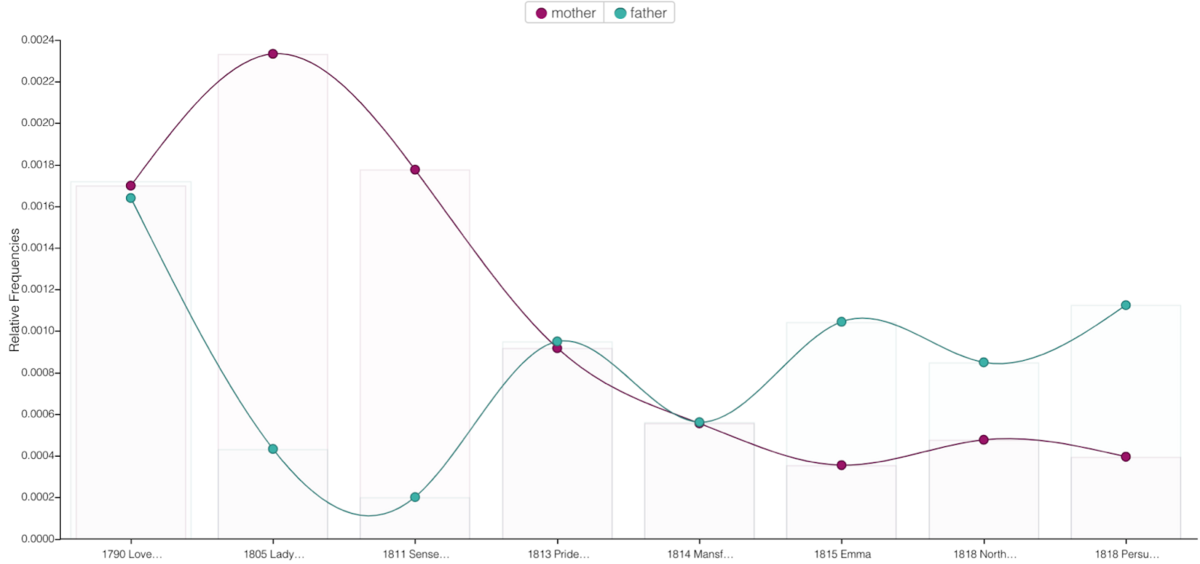Desire

Introduction
Desire is one of the central elements of literature, which spans the bringing-together of conflicting human desires in narrative or poetry. It reveals the complexity of needs and wants, from plot-generating elements concerning the quest for love, wealth and power, to the fascination with quotidian things in the world, and to the often symbolic and opaque desires that may be best understood through the theory of psychoanalysis.
Desire is also a function of texts that build up a desire to reach the conclusion of the plot, the disclosure of “whodunit,” for example.
Computational approaches to desire may help to navigate texts in which particular words are significant, and compare them to a larger corpora.
The rhetoric of desire—which is far from simple, but not impossible to model—may also be studied on a larger scale, taking note that the language of desire may have changed.
Applications
Elementary
There is not one simple way to approach desire computationally, but generating a word cloud is a visual way to get an overview about the words associated with desire. For instance, a word cloud of verbs in a text about desire might help to get a sense of what kind of verbs are used in a text about desire. Voyant Tools even allow users to investigate what is the center of attention on a larger scale by generating a word cloud for a whole body of texts, such as an author’s entire production or several novels belonging to the same genre. The insights from the word clouds might help to shape the exploration of desire further. To complement the word clouds, an introduction to Voyant’s Keywords in Context is a helpful tool to investigate in what kind of contexts the significant words appear.
Another approach could be to search a text or a corpus for words that are related to a language of desire and see them in context. One starting point can be using a reverse dictionary and searching for “desire” or words believed to be specifically associated with sensation extracted from lists of words observed in other contexts. Voyant tools offer a Key Word In Context (KWIC) concordance function allowing you to investigate co-occurrences of words or characters. Alternatively, conduct a network analysis to investigate who is the center of what is desired using e.g. Gephi, a free software for social network analysis.
Advanced
As desire is an emotionally-loaded concept, conducting a sentiment analysis is one natural computational approach to it. A sentiment analysis is based on the idea that words are associated with sentiments or valence, and that these implicit associations can be quantified. Kim, Padó, and Klinger (2017) found that emotions carry relevant information for distinguishing genres. Get inspired by their methods, focus more specifically on the genre of romance and love stories, and split the data set retrieved from Project Gutenberg in several subsets based on publication dates. Explore the sentiment plot arc development over time: has the emotional story arc changed? You can also compare the results with different emotion lexicons, such as NRC, ESN, DPM, and TDPM discussed by Tabak and Evrim (2016).
Another way of analysing desire is building character networks. Following Moretti (REF), networks can shed light on how characters are related to each other. Hence, networks can help to visualise centrality, conflict, and clustering of characters. The edges, i.e. the connecting lines of the network, can also be directed, showing how the interactions are directed. The social dynamics are at the core of romances and love stories - think for example of the turbulent relationships in Emily Brontë’s Wuthering Heights – and analysing the network development throughout a story can be a useful distant reading method to study the plot. See this Network analysis of Three Kingdoms for an example of building character networks of a novel.
Despite these initial ideas, computational analysis of desire is still widely uncharted territory. For further food for thought, read about Nalisnick and Baird’s (2013) idea to combine network and sentiment analysis. Based on the sentiment scores between the characters of Shakespeare's plays, they produced sentiment networks to characterize the social relations of the plays. What do you think of this approach? Can you think of other creative ways to combine computational methods presented so far to analyse the language of desire?
Resources
Scripts and sites
-
Network analysis of the novel Romance of Three Kingdoms.
-
Gephi: A free software for network analysis.
-
Voyant Tools for visualising and analysing digital texts.
- Sentiment Analysis with tidy data.
Articles
-
Kim, E., Padó, S., & Klinger, R. (2017, August). Investigating the relationship between literary genres and emotional plot development. In Proceedings of the Joint SIGHUM Workshop on Computational Linguistics for Cultural Heritage, Social Sciences, Humanities and Literature (pp. 17-26). http://dx.doi.org/10.18653/v1/W17-2203
- Moretti, Franco. (2011, May). Network Theory, Plot Analysis. Stanford Literary Lab Pamphlet 2, May 1, 2011. https://litlab.stanford.edu/LiteraryLabPamphlet2.pdf
-
Nalisnick, E. T., & Baird, H. S. (2013, August). Extracting sentiment networks from Shakespeare's plays. In 2013 12th International Conference on Document Analysis and Recognition (pp. 758-762). IEEE. http://dx.doi.org/10.1109/ICDAR.2013.155
-
Tabak, F. S., & Evrim, V. (2016, October). Comparison of emotion lexicons. In 2016 HONET-ICT (pp. 154-158). IEEE. https://doi.org/10.1109/HONET.2016.7753440